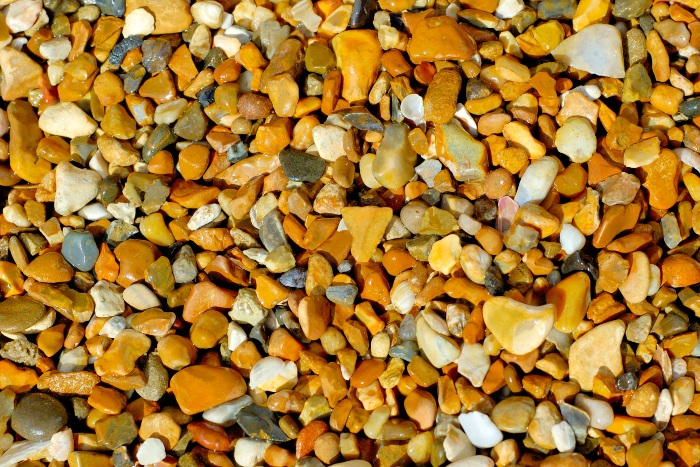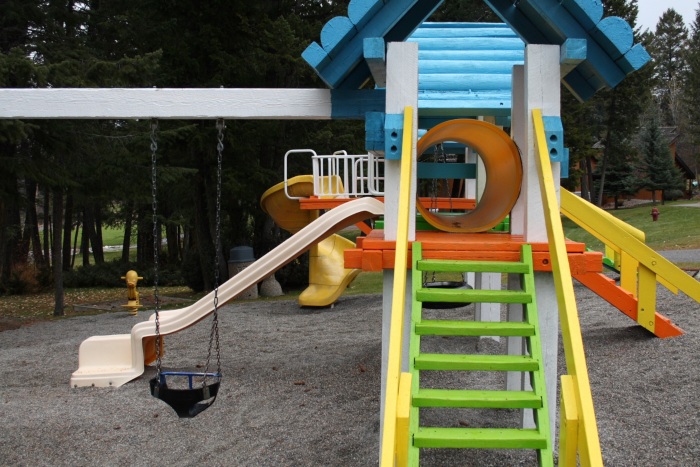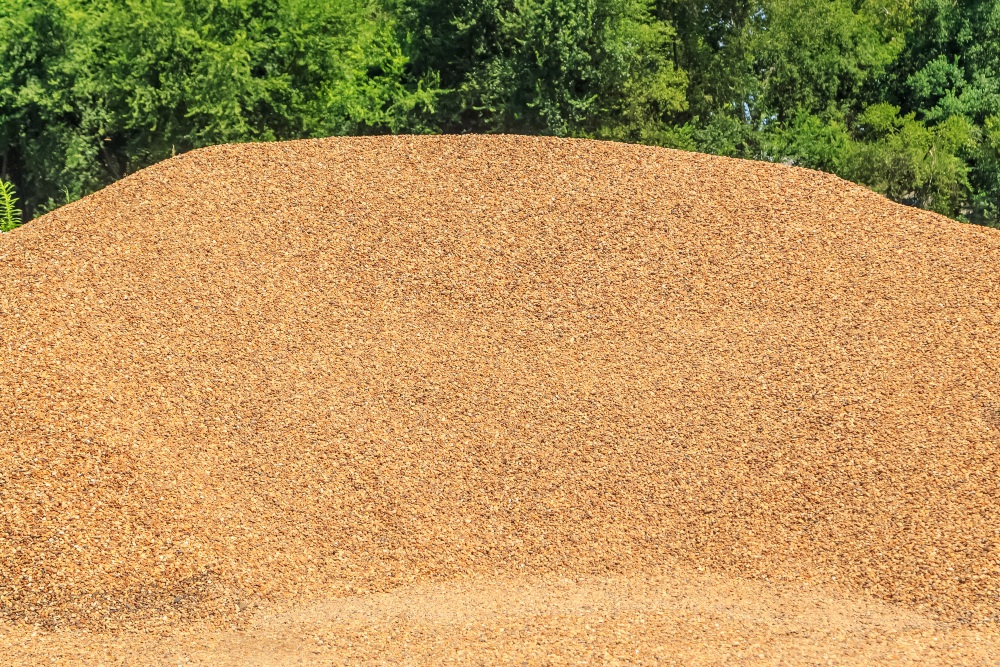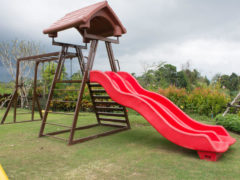Are you considering pea gravel as a playground surfacing option? When constructing a playground, you often need to make many decisions. For example, there are infinite playground surfacing options. How do you know which one is right for you? You want your playground surface to be safe, effective, withstand regular use, and not break the bank.
You’ve likely seen pea gravel used in playground surfaces and wondered if it might be an option. Here, we broke down the pros and cons of pea gravel, so you don’t have to go searching the annals of the web to find the information you need to make a decision.
What is pea gravel?

Pea gravel consists of small stones, typically found near water, and has a smooth surface due to weathering. The round stones are the size of peas, ranging from ⅛ inch to ⅜ inch. Depending on the rock source, pea stone gravel comes in all kinds of natural colors like rust-brown, shades of gray, white, and even translucent.
It’s an eco-friendly, raw material landscape fabric, so it doesn’t bring any synthetic chemicals or dyes to the playground. You’ll find this versatile hardscaping material covering driveways, water drains, paths, patios, filling spaces between pavers, and even in playgrounds.
- Safety and Accessibility of Pea Gravel
- Cost of Pea Gravel
- Quality and Maintenance of Pea Gravel
- Installation of Pea Gravel
Safety of Pea Gravel as a Playground Surface
Pros:
- Believe it or not, pea gravel, at depths of nine inches deep, can sufficiently reduce the impact of a fall. But that’s where the safety advantages of pea gravel surfaces end.
Cons:

- While pea gravel is tested and meets ASTM standards for impact attenuation, it can only protect up to five feet at a nine-inch depth.
- It can be problematic when using high-height playground equipment.
- Plus, falling on the stone doesn’t exactly have much appeal.
- Pea gravel also readily shifts underfoot, making it hard for wheelchairs and folks with limited mobility to navigate.
- Since it doesn’t meet the basic ADA safety standards, commercial and public playground spaces are out. You may want to leave this surface to private playgrounds and backyards.
- If your playground is for toddlers, you may also want to avoid pea gravel. Children tend to put small pea stones in their mouths.
- Over time, the gravel rock will naturally compress (at least 25%) under its constant use.
- It becomes hard and creates a non-shock absorbing surface that can make injuries more common.
Cost of Pea Gravel as Playground Flooring
Pros:

- Pea gravel is a relatively low-cost loose-fill material.
- The material alone typically costs $30 to $50 per ton, costing you about $3,000-5,000 to fill a 2,500 square foot area with a minimum 9-inch depth.
- While you can do it yourself, it may cost more as you need to add in the cost of a header or edging and crushed rock for the base layer.
- In comparison, contractors often have access to manufacturer discounts, and their work often comes with a guarantee.
Cons:
- While the costs of pea gravel material are low, when you’re replacing it every few years and keeping it maintained, those costs can start to add up.
Quality and Maintenance of Pea Gravel as a Playground Surface
Pros:

- Pea gravel suppresses unwanted weed growth, retains moisture, and doesn’t decompose like grass or mulch.
- It prevents rainwater buildup thanks to its adequate drainage.
- Plus, pea gravel keeps burrowing rodents at bay, and other animals tend to leave it alone.
- You can easily maintain pea gravel by raking stones into place, but the frequency of maintenance is another story.
Cons:
- On the other hand, pea gravel tends to travel unless you contain it with edging material.
- It will need to be inspected on an ongoing basis and refilled every four years.
- If your location experiences cold winters, the cold can make the gravel quite hard, impacting its safety.
- Snow removal will likely be one of the more significant challenges.
- It’s hard to avoid disturbing the gravel when shoveling.
- You’ll need to shovel most of the snow and then leave a thin layer behind, melting the rest with salt.
- Another factor due to the changing seasons is pea gravel’s tendency to break down into smaller particles.
- It forms a “stone dust” that creates a hardpan of compacted stone, typically in high-use areas, that becomes dangerous and difficult to break apart.
Installation of Pea Gravel for Playground Flooring
Pros:

- Great news! Installing pea gravel is relatively easy. You can undoubtedly find it at your favorite hardware store.
- Work the surface roughly six inches down and install at least three to six inches base layer of coarse base rock or crushed rock to prepare your site.
- Then, cover with at least a nine-inch layer of pea gravel to meet ASTM’s minimum fill depth standards.
Cons:
- The downside to pea gravel’s compression and high maintenance is you’ll likely be repeating the installation phase more often than you’d like.
Alternatives to Pea Gravel for Playgrounds
When it comes to ensuring the safety of the children on your playground, surfacing should rank as a top priority. You want a surface with a comfortable, soft cushion to walk on and, when installed correctly, should be compliant with ADA standards for handicap accessible areas.
Where pea gravel may be a let down in some of these respects, poured-in-place playground surfacing excels. Contact adventureTURF today for premium poured-in-place surfacing made to keep your playground safe, fun, and enjoyable for every child.
With so many different qualities and characteristics to consider, choosing a playground surface can be bewildering. That’s why we’ve created an ultimate guide of all the pros and cons of 11 of the most popular playground surfaces, from wood chips to recycled rubber mulch.
Frequently Asked Questions
Pea gravel is a relatively low-cost loose-fill material, costing you about $3,000-5,000. The initial investment in pea gravel might be low, but you’ll have to deal with maintenance costs.
A layer of pea gravel, which is nine inches deep, can sufficiently reduce the impact of a fall. However, because it doesn’t meet the ADA safety standards, commercial and public playground spaces are out.
Pea gravel is a very versatile hardscaping material. It’s often used for covering driveways, water drains, paths, patios, and filling spaces between pavers.
To install pea gravel as a surface material, work the surface roughly six inches down and install at least three to six inches base layer of coarse base rock or crushed rock.


